Shear Strain Singularity-Inspired Identification of Initial Delamination in CFRP Laminates: Multiscale Modulation Filter for Extraction of Damage Features
Abstract
:1. Introduction
2. EMSG-Based Approach for Identification of Initial Delamination in Fiber-Reinforced Composite Laminates
2.1. Identification of Delamination by Singularity of Shear Strain
2.2. Multiscale Analysis for Elimination of Noise Components
2.3. MMF for Extraction of Initial Delamination Features
3. Proof of Concept
3.1. Experimental Setup and Specimen
3.2. Experimental Results
4. Conclusions
- (1)
- Due to the difficulty in finding the optimal scale parameter of the MSG, the singularity peak induced by initial delamination cannot be thoroughly isolated from the global component. In consequence, the singularity peak can be largely obscured by the global component, which hinders the capacity of the MSG for identifying initial delamination in fiber-reinforced composite laminates.
- (2)
- The MMF with the optimal frequency translation parameters can enhance the EMSG to concentrate in a narrow wavenumber band, which is dominated by the damage-induced peak. In that situation, the EMSG can focus on the damage features and extract them for the identification of initial delamination. To be specific, the delamination-induced peak in the EMSG can be isolated from the global component, whereby the presence, location, and size of the initial delamination can be graphically characterized.
- (3)
- The EMDI built on a single mode shape may contain insufficient features of the initial delamination. To extract the full features of the initial delamination, an integrating scheme is utilized to fuse the delamination-induced singularity peaks associated with multiple mode shapes, whereby the FEMDI is formulated with the intersection of multiple EMDIs.
Author Contributions
Funding
Institutional Review Board Statement
Informed Consent Statement
Data Availability Statement
Acknowledgments
Conflicts of Interest
References
- Katunin, A.; Dragan, K.; Dziendzikowski, M. Damage identification in aircraft composite structures: A case study using various non-destructive testing techniques. Compos. Struct. 2015, 127, 1–9. [Google Scholar] [CrossRef]
- Cantwell, W.; Morton, J. Detection of impact damage in CFRP laminates. Compos. Struct. 1985, 3, 241–257. [Google Scholar] [CrossRef]
- Komorowski, J.; Simspson, D.; Gould, R. A technique for rapid impact damage detection with implication for composite aircraft structures. Composites 1990, 21, 169–173. [Google Scholar] [CrossRef]
- Hosur, M.; Murthy, C.; Ramamurthy, T.; Shet, A. Estimation of impact-induced damage in CFRP laminates through ultrasonic imaging. NDT E Int. 1998, 31, 359–374. [Google Scholar] [CrossRef]
- Tsutsui, H.; Kawamata, A.; Kimoto, J.; Isoe, A.; Hirose, Y.; Sanda, T.; Takeda, N. Impact damage detection system using small-diameter optical-fiber sensors embedded in CFRP laminate structures. Adv. Compos. Mater. 2004, 13, 43–55. [Google Scholar] [CrossRef]
- Tsutsui, H.; Kawamata, A.; Sanda, T.; Takeda, N. Detection of impact damage of stiffened composite panels using embedded small-diameter optical fibers. Smart Mater. Struct. 2004, 13, 1284–1290. [Google Scholar] [CrossRef]
- Takeda, S.; Minakuchi, S.; Okabe, Y.; Takeda, N. Delamination monitoring of laminated composites subjected to low-velocity impact using small-diameter FBG sensors. Compos. Part A Appl. Sci. Manuf. 2005, 36, 903–908. [Google Scholar] [CrossRef]
- Frieden, J.; Cugnoni, J.; Botsis, J.; Gmuer, T. Low energy impact damage monitoring of composites using dynamic strain signals from FBG sensors—Part I: Impact detection and localization. Compos. Struct. 2012, 94, 438–445. [Google Scholar] [CrossRef]
- Frieden, J.; Cugnoni, J.; Botsis, J.; Gmuer, T. Low energy impact damage monitoring of composites using dynamic strain signals from FBG sensors—Part II: Damage identification. Compos. Struct. 2012, 94, 593–600. [Google Scholar] [CrossRef]
- Graham, D.; Maas, P.; Donaldson, G.; Carr, C. Impact damage detection in carbon fibre composites using HTS SQUIDs and neural networks. NDT E Int. 2004, 37, 565–570. [Google Scholar] [CrossRef]
- Liang, T.; Ren, W.; Tian, G.; Elradi, M.; Gao, Y. Low energy impact damage detection in CFRP using eddy current pulsed thermography. Compos. Struct. 2016, 143, 352–361. [Google Scholar] [CrossRef] [Green Version]
- Angelidis, N.; Irving, P. Detection of impact damage in CFRP laminates by means of electrical potential techniques. Compos. Sci. Technol. 2007, 67, 594–604. [Google Scholar] [CrossRef]
- Ball, R.; Almond, D. The detection and measurement of impact damage in thick carbon fibre reinforced laminates by transient thermography. NDT E Int. 1998, 31, 165–173. [Google Scholar] [CrossRef] [Green Version]
- Barden, T.; Almond, D.; Pickering, S.; Morbidini, M.; Cawley, P. Detection of impact damage in CFRP composites by thermosonics. Nondestruct. Test. Eval. 2007, 22, 71–82. [Google Scholar] [CrossRef]
- Pieczonka, L.; Aymerich, F.; Brozek, G.; Szwedo, M.; Staszewski, W.; Uhl, T. Modelling and numerical simulations of vibrothermography for impact damage detection in composites structures. Struct. Control. Health Monit. 2013, 20, 626–638. [Google Scholar] [CrossRef]
- Maier, A.; Schmidt, R.; Oswald-Tranta, B.; Schledjewski, R. Non-destructive thermography analysis of impact damage on large-scale CFRP automotive parts. Materials 2014, 7, 413–429. [Google Scholar] [CrossRef] [PubMed]
- Gryzagoridis, J.; Findeis, D. Impact damage detection on composites using optical NDT techniques. Insight 2010, 52, 248–251. [Google Scholar] [CrossRef] [Green Version]
- Su, Z.; Ye, L.; Lu, Y. Guided Lamb waves for identification of damage in composite structures: A review. J. Sound Vib. 2006, 295, 753–780. [Google Scholar] [CrossRef]
- Eremin, A.; Golub, M.; Glushkov, E.; Glushkova, N. Identification of delamination based on the Lamb wave scattering resonance frequencies. NDT E Int. 2019, 103, 145–153. [Google Scholar] [CrossRef]
- Su, Z.; Yang, C.; Pan, N.; Ye, L.; Zhou, L. Assessment of delamination in composite beams using shear horizontal (SH) wave mode. Compos. Sci. Technol. 2007, 67, 244–251. [Google Scholar] [CrossRef]
- Quaegebeur, N.; Micheau, P.; Masson, P.; Maslouhi, A. Structural health monitoring strategy for detection of interlaminar delamination in composite plates. Smart Mater. Struct. 2010, 19, 085005. [Google Scholar] [CrossRef]
- Hettler, J.; Tabatabaeipour, M.; Delrue, S.; van den Abeele, K. Linear and nonlinear guided wave imaging of impact damage in CFRP using a probabilistic approach. Materials 2016, 9, 901. [Google Scholar] [CrossRef] [Green Version]
- Solodov, I.; Busse, G. Nonlinear air-coupled emission: The signature to reveal and image microdamage in solid materials. Appl. Phys. Lett. 2007, 91, 251910. [Google Scholar] [CrossRef]
- Polimeno, U.; Meo, M. Detecting barely visible impact damage detection on aircraft composites structures. Compos. Struct. 2009, 91, 398–402. [Google Scholar] [CrossRef]
- Aymerich, F.; Staszewski, W. Impact damage detection in composite laminates using nonlinear acoustics. Compos. Part A Appl. Sci. Manuf. 2010, 41, 1084–1092. [Google Scholar] [CrossRef]
- Klepka, A.; Staszewski, W.; di Maio, D.; Scarpa, F. Impact damage detection in composite chiral sandwich panels using nonlinear vibro-acoustic modulations. Smart Mater. Struct. 2013, 22, 084011. [Google Scholar] [CrossRef]
- Pieczonka, L.; Ukowski, P.; Klepka, A.; Staszewski, W.; Uhl, T.; Aymerich, F. Impact damage detection in light composite sandwich panels using piezo-based nonlinear vibro-acoustic modulations. Smart Mater. Struct. 2014, 23, 105021. [Google Scholar] [CrossRef]
- Qiao, P.; Lu, K.; Lestari, W.; Wang, J. Curvature mode shape-based damage detection in composite laminated plates. Compos. Struct. 2007, 80, 409–428. [Google Scholar] [CrossRef]
- Araújo dos Santos, J.; Lopes, H.; Vaz, M.; Soares, C.M.; Soares, C.A.; de Freitas, M. Damage localization in laminated composite plates using mode shapes measured by pulsed TV holography. Compos. Struct. 2006, 76, 272–281. [Google Scholar] [CrossRef]
- Pérez, M.; Gil, L.; Oller, S. Impact damage identification in composite laminates using vibration testing. Compos. Struct. 2014, 108, 267–276. [Google Scholar] [CrossRef]
- Xu, W.; Cao, M.; Li, X.; Radzieński, M.; Ostachowicz, W.; Bai, R. Delamination monitoring in CFRP laminated plates under noisy conditions using complex-wavelet 2D curvature mode shapes. Smart Mater. Struct. 2017, 26, 104008. [Google Scholar] [CrossRef]
- Yang, Z.; Radzienski, M.; Kudela, P.; Ostachowicz, W. Two-dimensional modal curvature estimation via Fourier spectral method for damage detection. Compos. Struct. 2016, 148, 155–167. [Google Scholar] [CrossRef]
- Yang, Z.; Radzienski, M.; Kudela, P.; Ostachowicz, W. Two-dimensional Chebyshev pseudo spectral modal curvature and its application in damage detection for composite plates. Compos. Struct. 2017, 168, 372–383. [Google Scholar] [CrossRef]
- Chen, D.; Xu, Y.; Zhu, W. Non-model-based identification of delamination in laminated composite plates using a continuously scanning laser Doppler vibrometer system. J. Vib. Acoust. 2018, 140, 041001. [Google Scholar] [CrossRef] [Green Version]
- Xu, Y.; Chen, D.; Zhu, W.; Li, G.; Chattopadhyay, A. Delamination identification of laminated composite plates using measured mode shapes. Smart Struct. Syst. 2019, 23, 195–205. [Google Scholar]
- Cao, M.; Ostachowicz, W.; Radzieński, M.; Xu, W. Multiscale shear-strain gradient for detecting delamination in composite laminates. Appl. Phys. Lett. 2013, 103, 101910. [Google Scholar] [CrossRef]
- Fan, W.; Qiao, P. Vibration-based damage identification methods: A review and comparative study. Struct. Health Monit. Int. J. 2011, 10, 83–111. [Google Scholar] [CrossRef]
- Xu, W.; Fang, H.; Cao, M.; Zhou, L.; Wang, Q.; Ostachowicz, W. A noise-robust damage indicator for characterizing singularity of mode shapes for incipient delamination identification in CFRP laminates. Mech. Syst. Signal Processing 2019, 121, 183–200. [Google Scholar] [CrossRef]
- Xu, W.; Su, Z.; Liu, J.; Cao, M.; Ostachowicz, W. Singular energy component for identification of initial delamination in CFRP laminates through piezoelectric actuation and non-contact measurement. Smart Mater. Struct. 2020, 29, 045001. [Google Scholar] [CrossRef]
- Cao, M.; Su, Z.; Xu, H.; Radzieński, M.; Xu, W.; Ostachowicz, W. A novel damage characterization approach for laminated composites in the absence of material and structural information. Mech. Syst. Signal Processing 2020, 143, 106831. [Google Scholar] [CrossRef]
- Leissa, A.; Qatu, M. Vibration of Continuous Systems; McGraw Hill: New York, NY, USA, 2011. [Google Scholar]
- Xu, W.; Cao, M.; Ostachowicz, W.; Radzieński, M.; Xia, N. Two-dimensional curvature mode shape method based on wavelets and Teager energy for damage detection in plates. J. Sound Vib. 2015, 347, 266–278. [Google Scholar] [CrossRef]
- Mallat, S. A Wavelet Tour of Signal Processing; Academic Press: Salt Lake City, UT, USA, 2008. [Google Scholar]
- Xu, H.; Su, Z.; Cheng, L.; Guyader, J.L.; Hamelin, P. Reconstructing interfacial force distribution for identification of multi-debonding in steel-reinforced concrete structures using noncontact laser vibrometry. Struct. Health Monit. Int. J. 2013, 12, 507–521. [Google Scholar] [CrossRef]

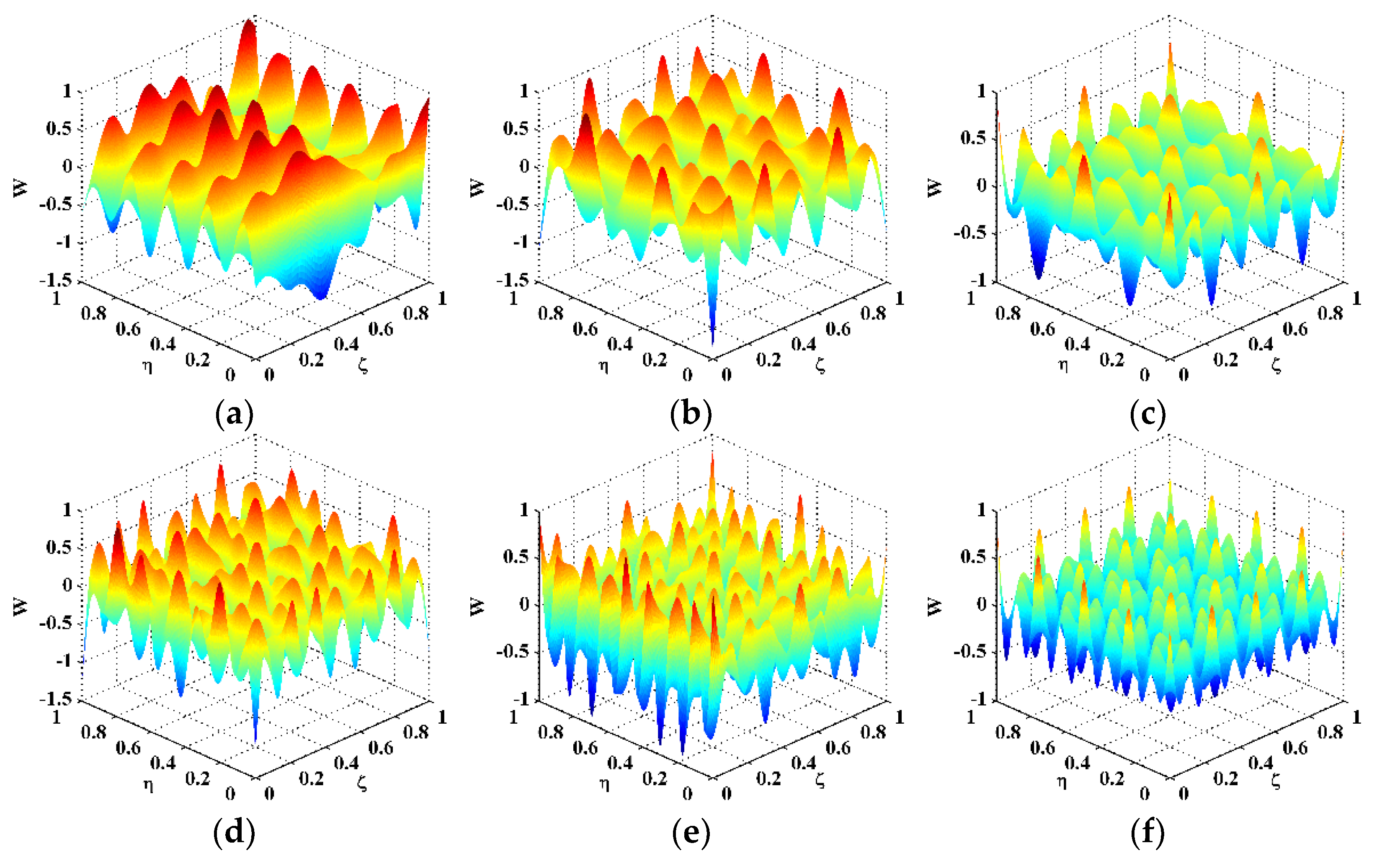
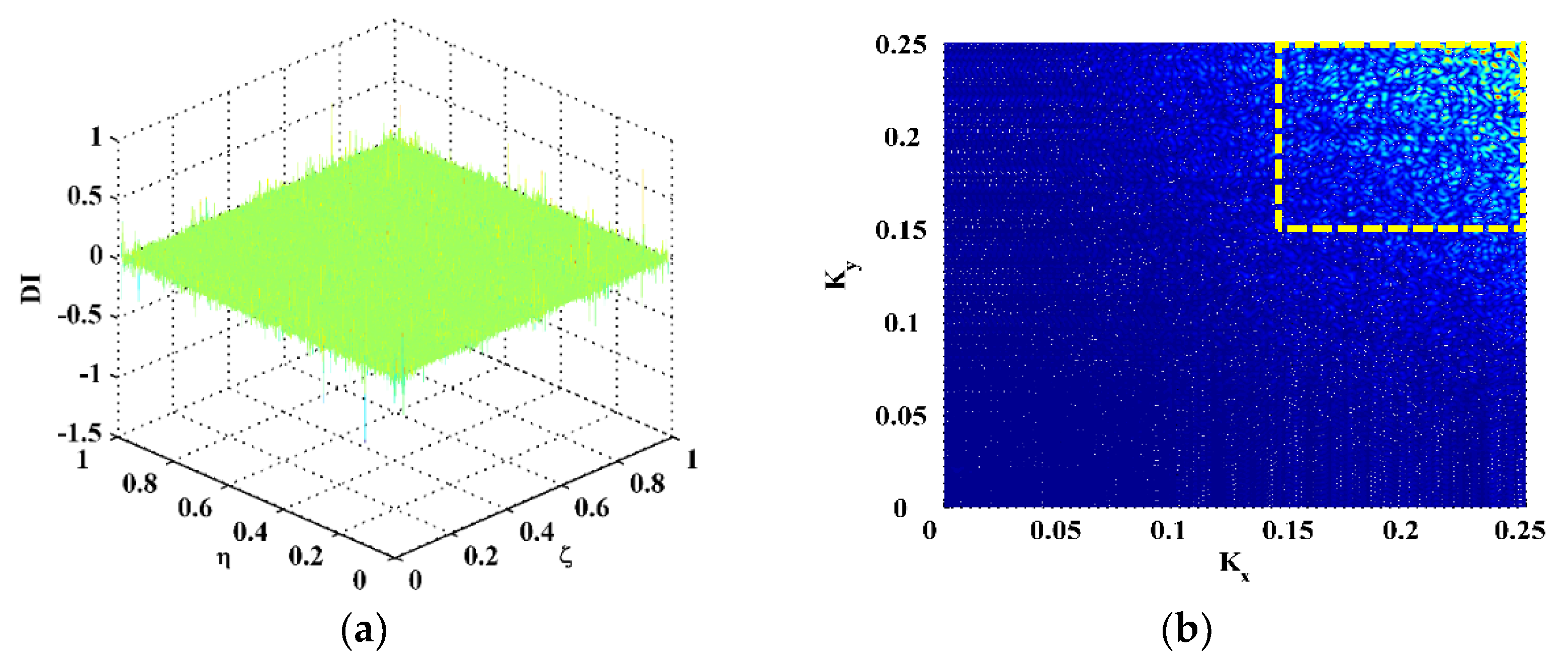
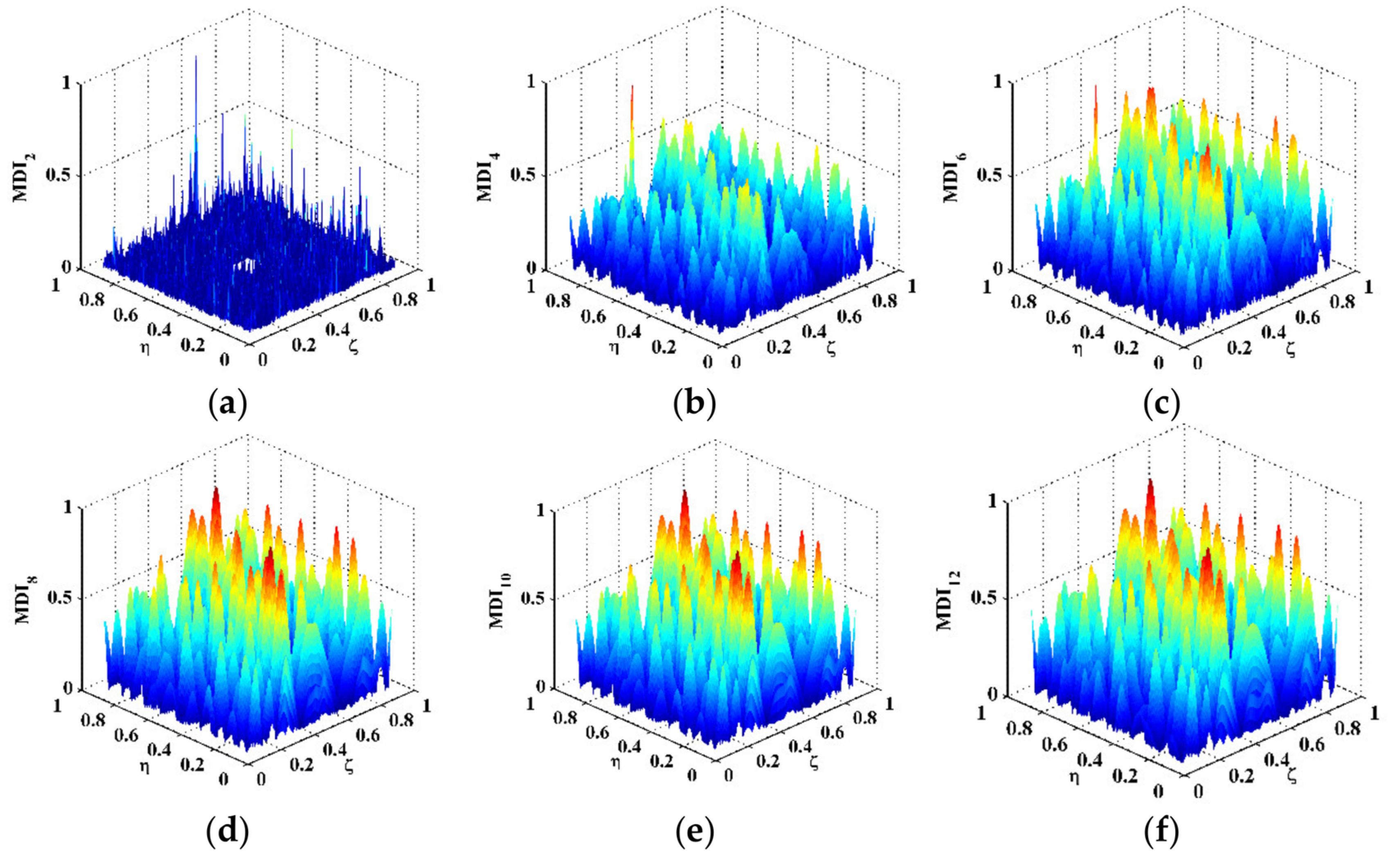
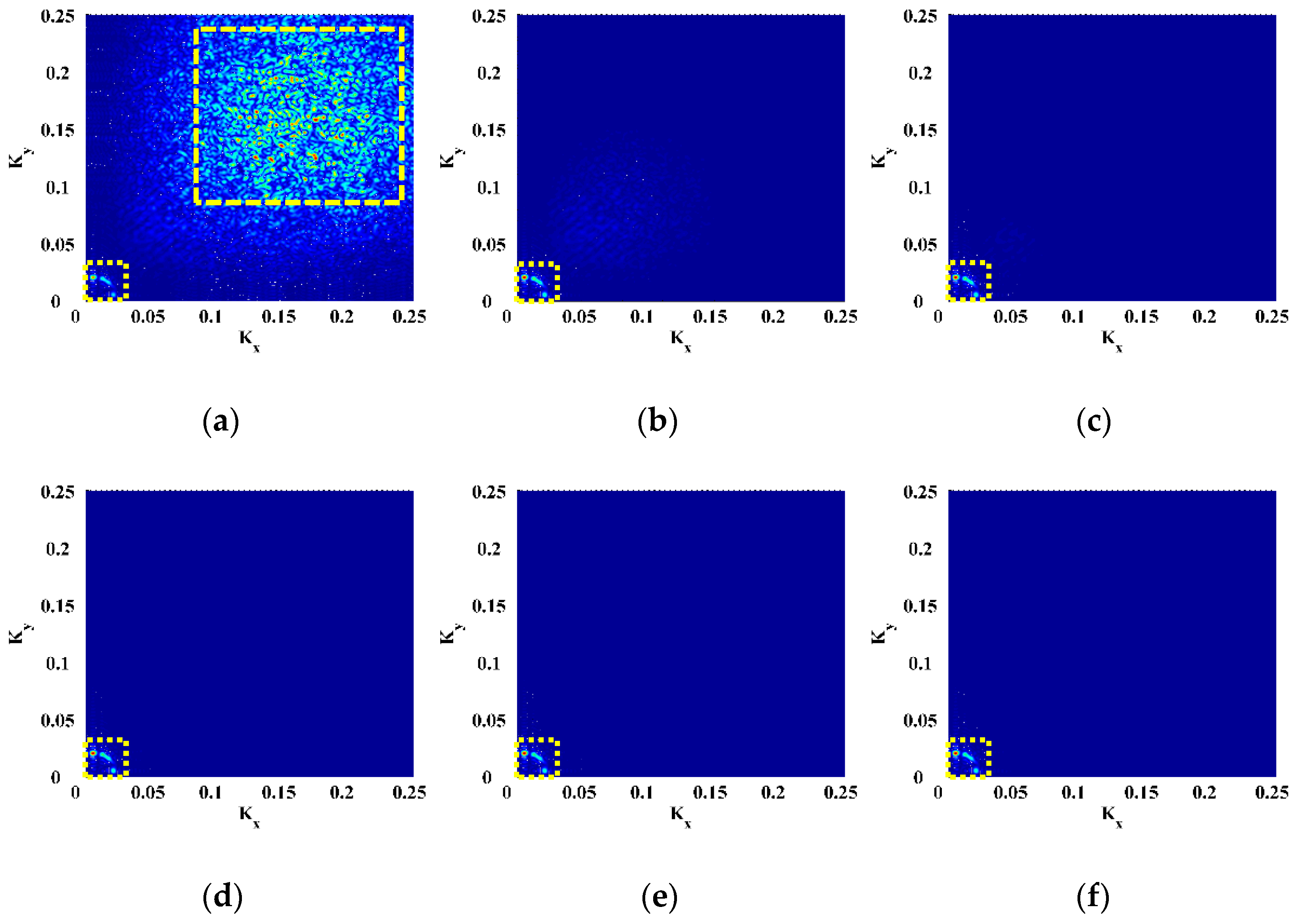
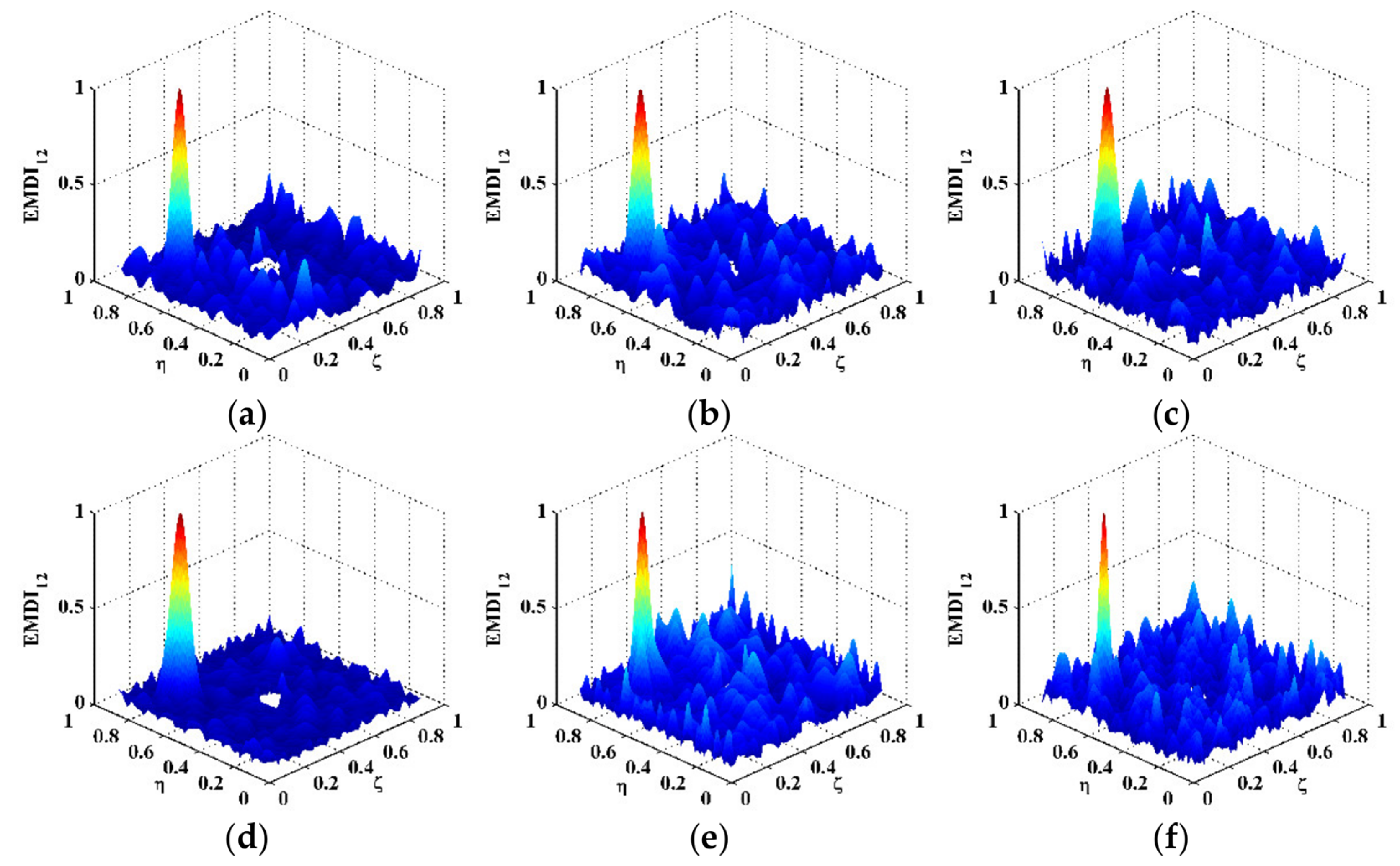

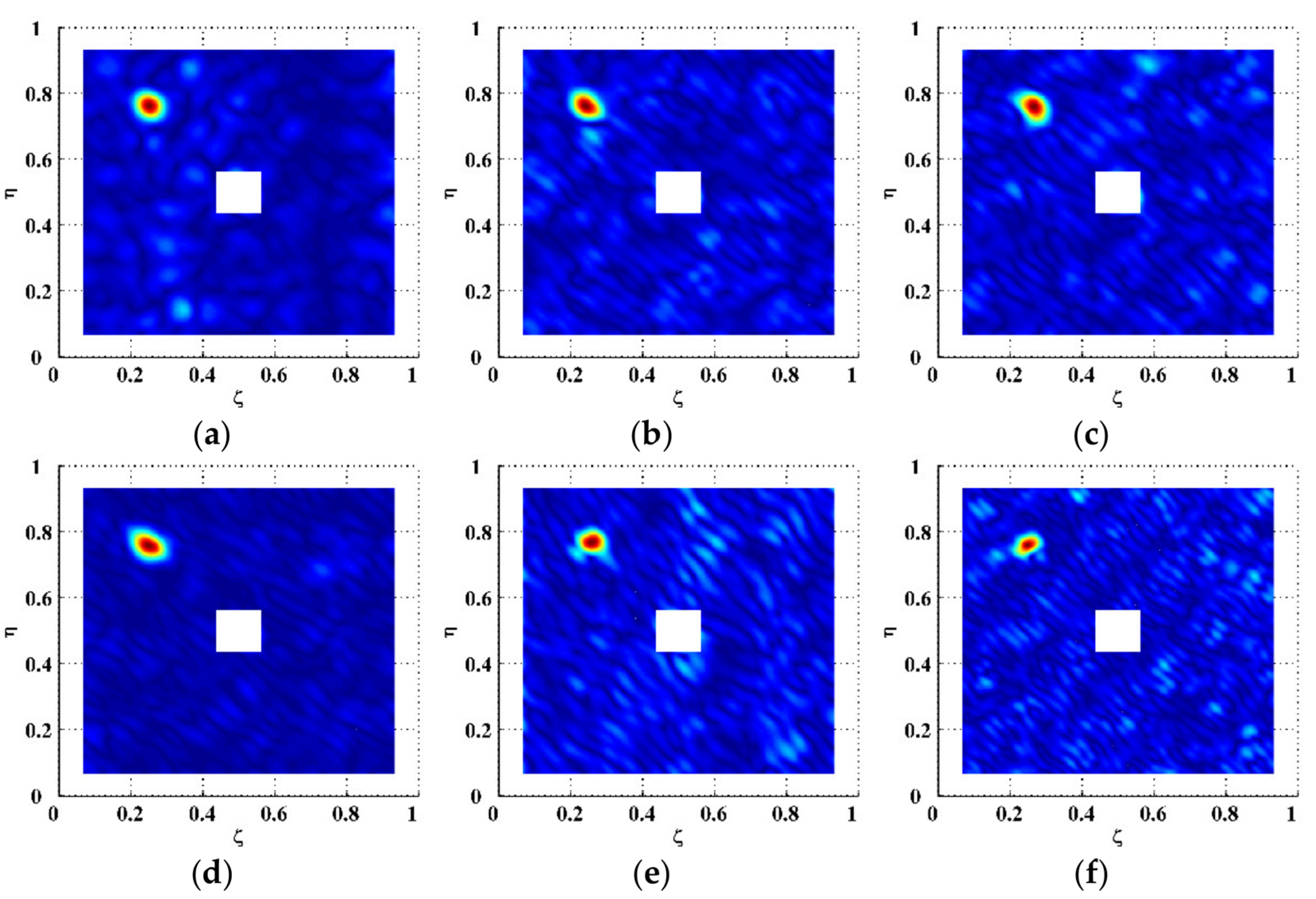
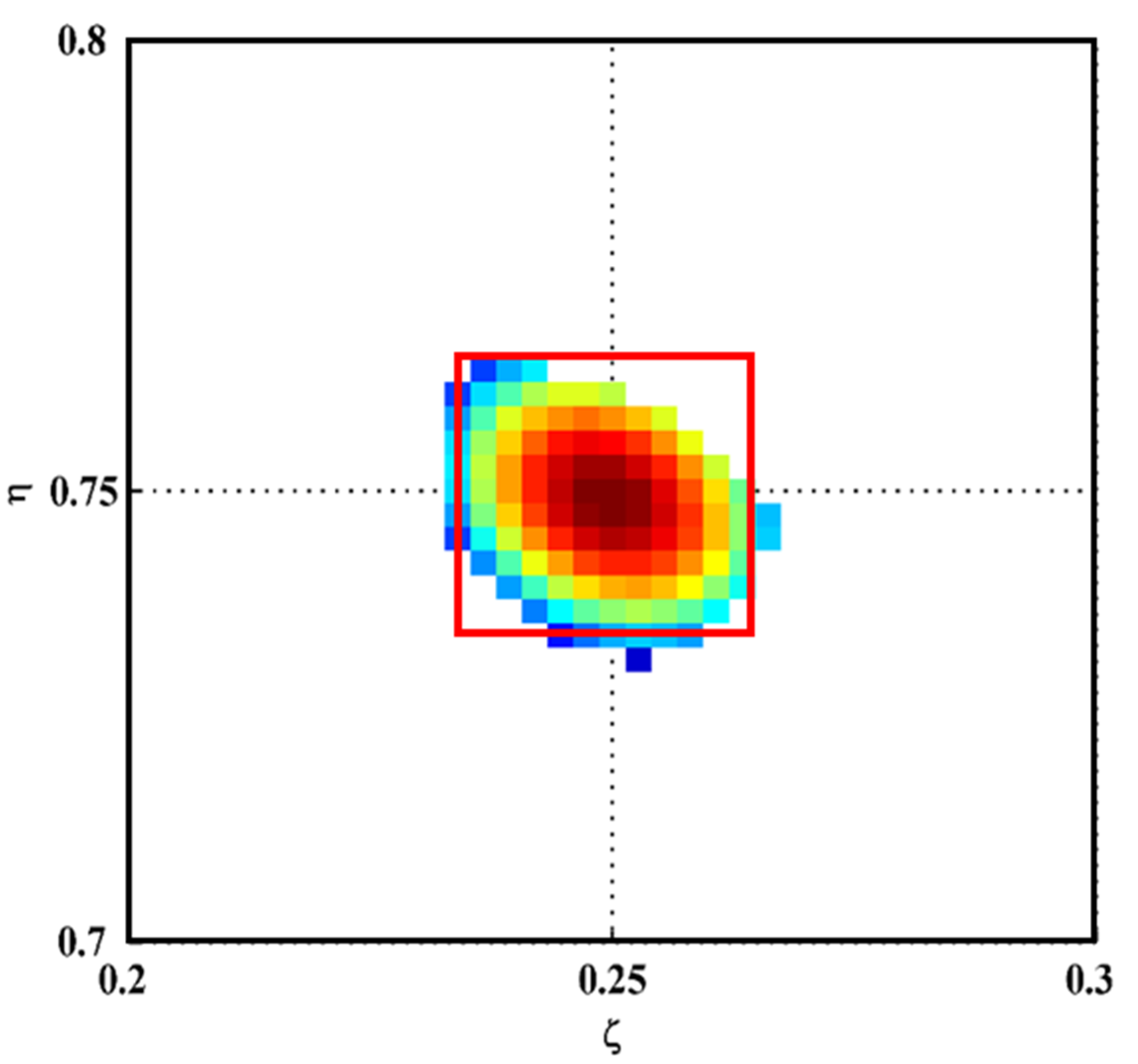
Publisher’s Note: MDPI stays neutral with regard to jurisdictional claims in published maps and institutional affiliations. |
© 2022 by the authors. Licensee MDPI, Basel, Switzerland. This article is an open access article distributed under the terms and conditions of the Creative Commons Attribution (CC BY) license (https://creativecommons.org/licenses/by/4.0/).
Share and Cite
Xu, W.; Lu, Y.; Zhu, R.; Radzieński, M.; Cao, M.; Ostachowicz, W. Shear Strain Singularity-Inspired Identification of Initial Delamination in CFRP Laminates: Multiscale Modulation Filter for Extraction of Damage Features. Polymers 2022, 14, 2305. https://doi.org/10.3390/polym14112305
Xu W, Lu Y, Zhu R, Radzieński M, Cao M, Ostachowicz W. Shear Strain Singularity-Inspired Identification of Initial Delamination in CFRP Laminates: Multiscale Modulation Filter for Extraction of Damage Features. Polymers. 2022; 14(11):2305. https://doi.org/10.3390/polym14112305
Chicago/Turabian StyleXu, Wei, Yunfeng Lu, Ruihu Zhu, Maciej Radzieński, Maosen Cao, and Wiesław Ostachowicz. 2022. "Shear Strain Singularity-Inspired Identification of Initial Delamination in CFRP Laminates: Multiscale Modulation Filter for Extraction of Damage Features" Polymers 14, no. 11: 2305. https://doi.org/10.3390/polym14112305
APA StyleXu, W., Lu, Y., Zhu, R., Radzieński, M., Cao, M., & Ostachowicz, W. (2022). Shear Strain Singularity-Inspired Identification of Initial Delamination in CFRP Laminates: Multiscale Modulation Filter for Extraction of Damage Features. Polymers, 14(11), 2305. https://doi.org/10.3390/polym14112305






